Patara was one of the main Greek cities of Lycia, the area west of the present-day Turkish city of Antalya. It was the birthplace of St. Nicholas, who went on to become the Bishop of Myra, 60 km due east. The city of Xanthos was much closer, just 10 km due north. And 100 km due west of Patara is the island of Rhodes. According to Acts 21:1-2 in the New Testament in the Bible, St. Paul sailed to Patara from Rhodes and changed ships there during his sea voyage from Macedonia to Tyre.
In its earlier religious history, Patara had an important connection with the god Apollo. Like Delphi and Didyma, there was a temple and oracle to the god there.
Upon entering the site, the visitor walks along the main road heading south towards the beach. The ruins of various structures can be found mostly on the west side of the road, including the surviving tombs and sarcophagi of the city’s necropolis.
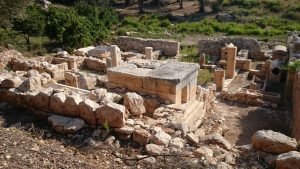
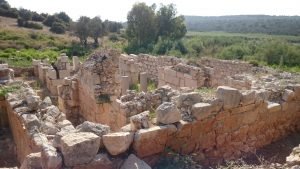
The first well-preserved structure the visitor comes to is the triple-vaulted triumphal arch built in the time of Emperor Trajan. Today it serves as the symbol of Patara’s ruins.
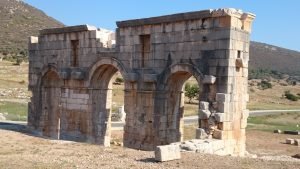
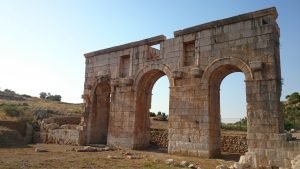
More ruins are found further down the road.
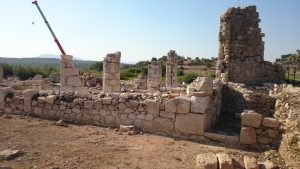
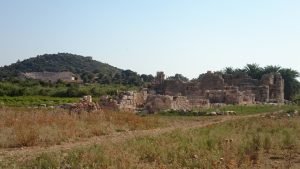
The main ruins are the ones closest to the sea. There is a theater, a column-lined avenue, and a well-restored building which looks like a small theater but was actually the local council house.
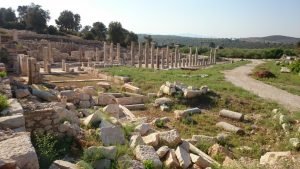
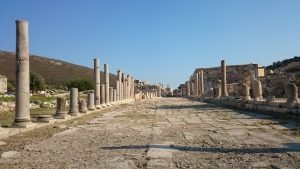
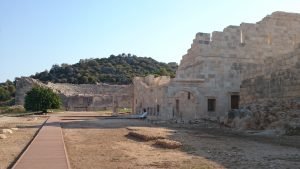
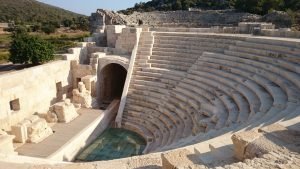
There are some interesting archaeological finds from Patara on display at the Antalya Museum. They include some various items such as pottery as well as an example of one of the chamber tombs unique to Patara. The local people preferred chamber tombs to the normal rock tombs carved directly into the sides of cliffs which are typical of other Lycian cities such as Myra and Antiphellus, as there are no cliffs in Patara.
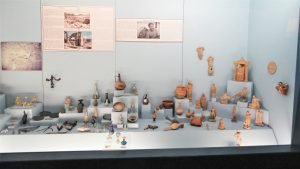
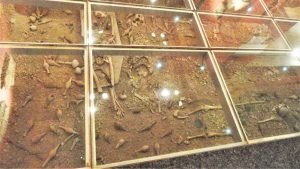
Tips for the Visitor
Patara can be reached from Kaş or Fethiye by way of one of the buses running between those two cities, and you would get off at the village of Adaköy. From there, it’s a 3.5-km walk south—passing through the village of Gelemiş—to the beginning of the ruins, which continue along the road for another kilometer or so, but you need to turn right towards the end to see the theater and the other more impressive ruins. After the ruins, it’s another kilometer south to reach the beach, or you can head west along the winding trail from the north end of the column-lined avenue to get to the ruins of Patara’s lighthouse.
Location Map
